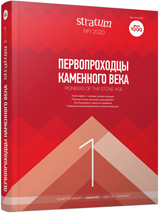Одонтологические особенности строения верхнего второго постоянного моляра со среднепалеолитической стоянки Рожок I. Сравнительный анализ
Morphology of the Upper Second Permanent Human Molar from the Middle Palaeolithic site Rozhok I. Comparative analysis
Author(s): Natalia I. Khaldeeva, Natalia V. Kharlamova, Alexander K. OcherednoySubject(s): History, Archaeology, Demography and human biology
Published by: Издательский дом Stratum, Университет «Высшая антропологическая школа»
Keywords: Eastern Europe; Azov Sea littoral; Middle Palaeolithic; Rozhok I site; paleoanthropology; human migrations; dental morphology
Summary/Abstract: Human permanent molar from the Middle Palaeolithic site Rozhok 1 sheds light on the earliest human migrations in Eastern Europe. The analysis of dental morphology and metrics is based on the methods developed by A. A. Zubov. Comparison of the Rozhok 1 molar with the teeth of the other representatives of the genus Homo dating from the Lower Palaeolithic to modern times gives a possibility to classify this individual to the group of so called “Mousterian sapiens”. The find has some traits characteristic of the European Neanderthals and shows a south-western anthropological specifics. It should be stressed, however, that it is difficult to make definite conclusions on the basis of single finds and in the absence of direct dates.
Journal: Stratum plus. Археология и культурная антропология
- Issue Year: 2020
- Issue No: 1
- Page Range: 361-370
- Page Count: 10
- Language: Russian
- Content File-PDF

